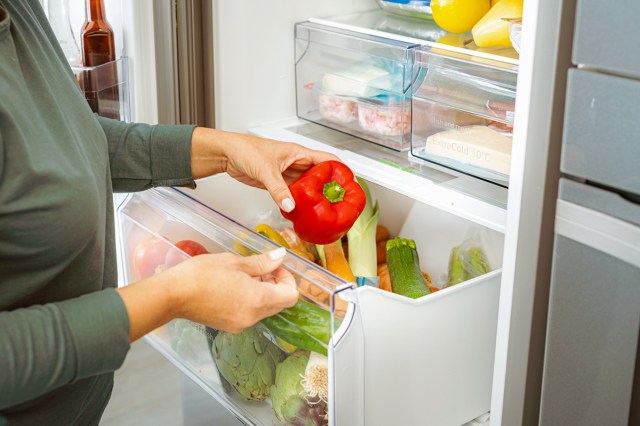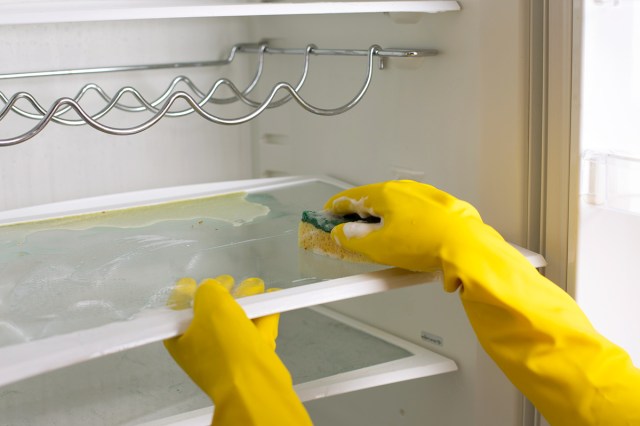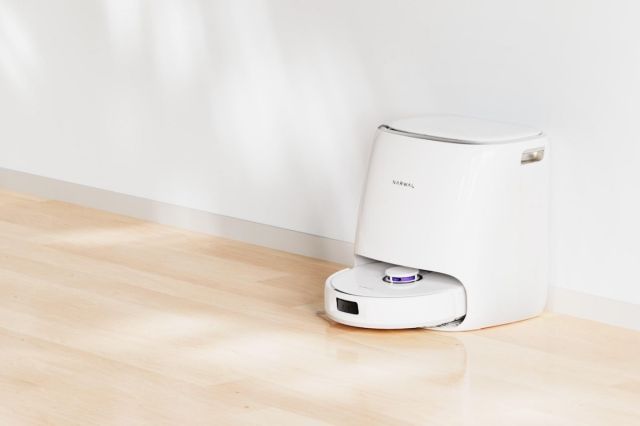Organizing your fridge can feel like a useless task. The whole thing is cold — why does it matter where anything is? But not all fridge locations are created equal. The recommended temperature for keeping your fridge in the best state to avoid food spoilage is 35 to 38 degrees Fahrenheit (1.7 to 3.3 degrees Celsius). However, the entire fridge is not going to be at this exact temperature all the time. You have to organize it efficiently to make sure your food stays fresh as long as possible.
It seems reasonable to place your most-used items in the door, like the milk you grab every morning for your coffee. However, the refrigerator door immediately hits the warmth of your kitchen, and is where you lose most of the necessary cold air. If it needs to last a decent amount of time, don’t put it in your fridge door. Your perishable items should be pushed into the cooler areas of the shelves in your fridge.

What Should You Store in the Door
The USDA advises against storing perishables, like milk, eggs, and any dairy products, in the door. But there are still multiple items to keep there. The door is best for things like condiments, drinks, and anything in a jar (or something with a lid) that’s non-perishable. So you’ll have to reach into the fridge for your daily milk, but you still have easy access to your soft drinks, ketchup, and mayo.

What to Store in Refrigerator Drawers and on Shelves
To make sure everything stays cool, you should also be deliberate about how you organize the rest of your fridge.
The drawers in your fridge are called crisper drawers, and they offer more humid environments than the shelves. Think about how fruit and vegetables are stored under a misting spray in the grocery store. Since that’s how they stay fresh there, you can apply the same logic to your fruits and veggies at home. You should store your fruit in one and vegetables in another. Keeping them separated is important — fruits give off gases that make vegetables spoil more quickly.
Reader Favorites
Store more non-perishables on the top shelf. It’s another good spot for the easy-access items. The middle shelf can be your milk, cheese, eggs, and prepared foods area. The bottom shelf should be for raw meat and fish to cut down on cross-contamination.

Organization and Cleaning Methods for Your Refrigerator
A good organization tip is to put your newest items at the back of the fridge. Make sure you’re pushing your older items to the front so you use up the half-eaten cheese before you break open a new one.
Cleaning your entire refrigerator is a big task. To make it easier, you can choose to clean one shelf at a time. Take the approach of going shelf by shelf so the task seems less daunting.
Overall, your refrigerator is a space that needs some regular organization and cleaning to make sure your food is in the best state. It’s important to keep your food fresh and good organization means it’s easier to plan your meals, and you’ll save money on avoiding food spoilage.
Feature Image Credit: RossHelen/ iStock
More From Our Network
Better Report is part of Inbox Studio, which publishes content that uplifts, informs, and inspires.

















